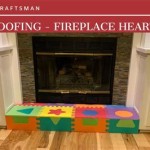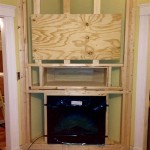Fireplace In Bedroom Regulations: Safety and Considerations
The allure of a crackling fireplace in the bedroom is undeniable. It evokes a sense of warmth, comfort, and relaxation, making it an attractive addition to any home. However, the installation and operation of a fireplace in a bedroom come with specific regulations and safety concerns that must be carefully considered. Understanding these regulations and implementing necessary precautions is crucial to ensure the well-being of occupants and prevent potential hazards.
Fireplace Types and Regulations
The specific regulations governing fireplaces in bedrooms vary depending on the type of fireplace, local building codes, and fire safety guidelines. Generally, two main types of fireplaces are considered for residential use: traditional open fireplaces and enclosed fireplaces, such as gas or electric fireplaces.
Traditional open fireplaces pose a higher risk of fire hazards due to their open combustion process and potential for sparks and embers. Building codes often restrict or prohibit the installation of open fireplaces in bedrooms, especially in older homes. Newer homes may have stricter regulations that require fire-resistant materials, proper ventilation, and fire-rated doors to separate the bedroom from other areas.
Enclosed fireplaces, such as gas or electric fireplaces, offer greater safety due to their enclosed combustion chambers and automatic safety features. While they may be less regulated than traditional fireplaces, they still require proper installation and maintenance. Local building codes may have specific requirements for ventilation, electrical wiring, and safety clearances for enclosed fireplaces.
Safety Considerations for Bedroom Fireplaces
Regardless of the type of fireplace, safety should be paramount when considering installation in a bedroom. The following considerations are vital to minimize fire hazards and ensure the well-being of occupants:
1. Adequate Ventilation
Proper ventilation is crucial for fireplace operation, as it ensures the removal of smoke, gases, and heat from the room. Building codes usually stipulate minimum ventilation requirements, such as the size and location of vents or chimneys. Inadequate ventilation can lead to smoke buildup, carbon monoxide poisoning, and potential fires.
2. Fire-Resistant Materials
The area surrounding the fireplace should be constructed with fire-resistant materials, such as non-combustible flooring, walls, and ceilings. This helps to prevent the spread of fire in the event of an accident or malfunction. It is also important to keep flammable materials, such as curtains, furniture, and bedding, away from the fireplace.
3. Fireplace Maintenance
Regular fireplace maintenance is essential to ensure safe operation. This includes cleaning the chimney annually to remove soot and creosote buildup, which can be highly flammable. Additionally, inspecting the fireplace and its components, such as the flue, damper, and hearth, for cracks or damage is crucial.
For gas fireplaces, regular inspections and maintenance of the gas lines and appliances are vital to prevent gas leaks and potential explosions. Electric fireplaces may require periodic checks of the wiring and electrical components for any signs of wear or damage.
4. Smoke Detectors and Fire Alarms
Having working smoke detectors and fire alarms is essential in any home, particularly when there is a fireplace present. These devices should be strategically placed in the bedroom, as well as in other areas of the house, to provide early warning of a fire. Regularly testing and maintaining these alarms is critical to ensure their functionality.
5. Child Safety
If there are children in the home, extra precautions are necessary to prevent accidents. Fireplace screens should be in place to protect children from touching hot surfaces or embers. It is also important to educate children about the dangers of fire and to keep matches, lighters, and flammable materials out of their reach.
Considering the potential fire hazards associated with fireplaces in bedrooms, it is important to consult with a qualified professional before any installation. They can provide guidance on applicable regulations, inspect the existing structure, and ensure that the fireplace is installed and maintained safely.
By understanding the regulations and implementing safety precautions, homeowners can enjoy the warmth and ambiance of a fireplace in their bedroom while minimizing the associated risks.

Fireplace Building Regulations Keep You Your Family Safe

Restoring A Bedroom Fireplace

The Perfect Place To Cozy Up A Fire What Know About Bedroom Fireplaces European Home

The Perfect Place To Cozy Up A Fire What Know About Bedroom Fireplaces European Home

Where Do I Put A Fireplace In My House We Love Fire

Decorate Your Bedroom With A Wood Stove Panadero

How Safe Is A Hanging Fireplace For Home Magikflame

ᑕ❶ᑐ Can An Electric Fireplace Be Against Wall
What Is The Recommended Height From Floor To Mount A Gas Fireplace Quora

How To Measure A Fireplace Victorian
Related Posts








